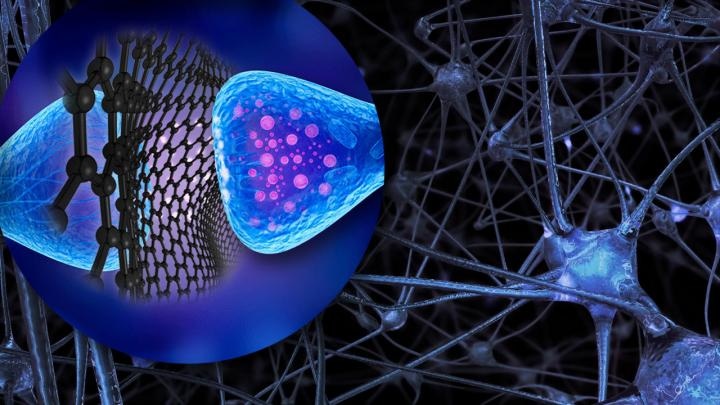May 10 2019
New research by SISSA has developed nanomaterials that are safe and selective and have a reversible effect. This new research has cast light on their potential to reach particular sites and influence the activity of particular brain cells.
 Image credit: SISSA
Image credit: SISSA
This paves the way for notable future scenarios in research and for designing possible therapies for neurological diseases.
As in a science fiction novel in which minuscule spacecrafts can reach a particular location of the brain and control the operation of particular neuron types or drug delivery, graphene flakes, the topic of the new research of the group of SISSA professor Laura Ballerini, pave the way for extremely advanced perspective.
Together with scientist Rossana Rauti, Ballerini is in charge of the research recently reported in the journal Nano Letters. These particles measure just one-millionth of a meter and have been established to be able to interfere with the transmission of the signal at excitatory neuronal synaptic junctions. Moreover, the research has demonstrated that these particles do so in a reversible manner since they vanish after a few days of administration without leaving any marks.
This positive evidence enables basic research, which could start further researches, aimed at examining the possible therapeutic impacts for the treatment of disorders, such as epilepsy, in which an excess of the activity of the excitatory neurons is recorded or at investigating new methods to carry therapeutic substances in situ. The study, conducted in collaboration with the universities of Trieste, Manchester, and Strasbourg, is carried out within the Graphene Flagship, the extensive funding project of the European Union, which aims to analyze the prospects of graphene in the most varied fields of application, from the biomedical to the industrial ones.
A Selective and Reversible Effect
“We reported in in vitro models that these small flakes interfered with the transmission of the signals from one neuron to another acting at specific zones called synapses which are crucial to the operation of our nervous system” explain Ballerini and Rauti. “The interesting thing is that their action is selective on specific synapses, namely those formed by neurons that in our brain have the role to excite (activate) their target neurons. We wanted to understand if this holds true not only in in vitro experiments but also inside an organism, with all the variable potential and complexity which derives from it.”
The outcome was more than positive. “In our models we analysed the activity of the hippocampus, a specific area of the brain, injecting the flakes into that site. What we saw, thanks to fluorescent tracers, is that the particles effectively insinuate themselves only inside the synapses of excitatory neurons. In this way, they interfere with the activity of these cells. In addition, they do so with a reversible effect: after 72 hours, the physiological mechanisms of clearance of the brain completely removed all the flakes.”
Neither Big nor Small: How the Flakes Work
The scientists explained that the interest in the procedure also lies in the fact that the flakes are actually well tolerated after being injected into the organism: “The inflammatory response and the immune reaction has proved lower than that recorded when administering simple saline solution. This is very important for possible therapeutic purposes.” The scientists further explained that the specificity of the action of the flakes would rely on the size of the particles employed. They can neither be smaller nor bigger than those adopted for this research (which had a diameter of approximately 100–200 nm in): “Size is probably at the root of selectivity: if the flakes are too big they are unable to penetrate the synapse, which are very narrow areas between one neuron and the other. If they are too small, they are presumably simply wiped out ultimately in both cases no effects on synapses were observed.”
The study will now investigate the possible advancements of this discovery, with a potential therapeutic horizon of definite interest for various pathologies.